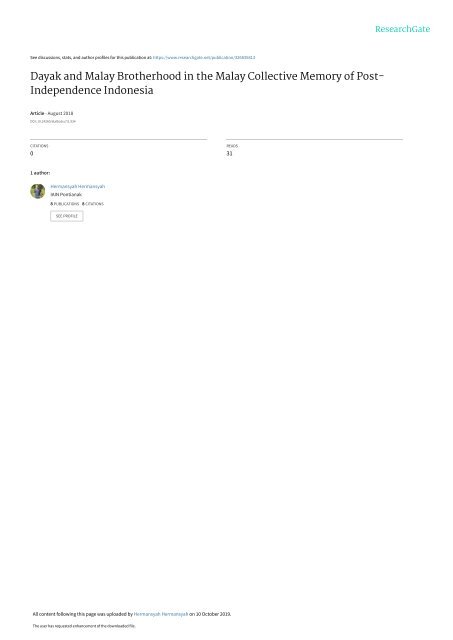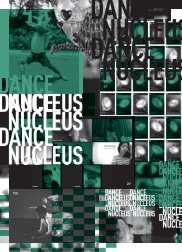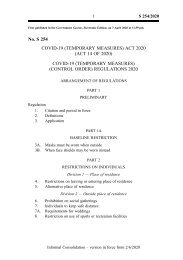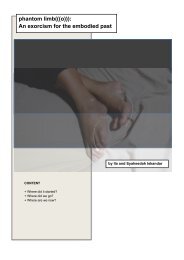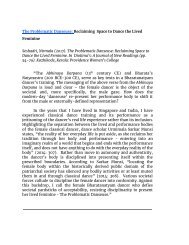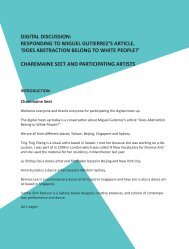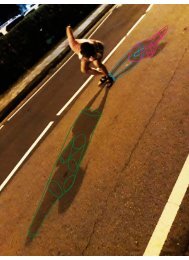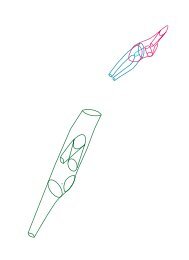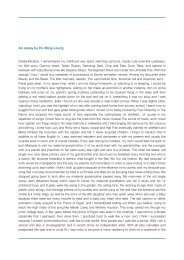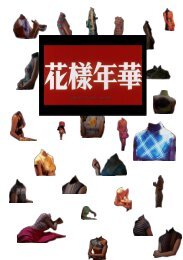Hermansyah Brotherhood
- No tags were found...
Create successful ePaper yourself
Turn your PDF publications into a flip-book with our unique Google optimized e-Paper software.
See discussions, stats, and author profiles for this publication at: https://www.researchgate.net/publication/326835813<br />
Dayak and Malay <strong>Brotherhood</strong> in the Malay Collective Memory of Post-<br />
Independence Indonesia<br />
Article · August 2018<br />
DOI: 10.24260/alalbab.v7i1.934<br />
CITATIONS<br />
0<br />
READS<br />
31<br />
1 author:<br />
<strong>Hermansyah</strong> <strong>Hermansyah</strong><br />
IAIN Pontianak<br />
8 PUBLICATIONS 8 CITATIONS<br />
SEE PROFILE<br />
All content following this page was uploaded by <strong>Hermansyah</strong> <strong>Hermansyah</strong> on 10 October 2019.<br />
The user has requested enhancement of the downloaded file.
AL ALBAB Volume 7 Number 1 June 2018<br />
DAYAK AND MALAY BROTHERHOOD IN THE<br />
MALAY COLLECTIVE MEMORY OF POST-<br />
INDEPENDENCE INDONESIA 1<br />
<strong>Hermansyah</strong><br />
IAIN Pontianak<br />
Email: hermansyahii@yahoo.com<br />
ABSTRACT<br />
Each community in the world has a past in which their existence is commonly<br />
determined by things happening in their past. To preserve their past a community<br />
needs means of transmission, among others, through oral traditions such<br />
as stories, mantra, and way of life. They inherit stories, mantra, and ways of life<br />
with values that have related meanings to their life. The heritage of these things<br />
is very important to preserve and develop the collective identity of the community.<br />
As they continue to be passed down, they become the collective memory of<br />
a community. The West Kalimantan Malay society has collective memories that<br />
are relatively inherited in the form of oral traditions and other life practices such<br />
as cultivation. Part of the collective memory has awakened them to the brotherhood<br />
with the people called Dayak today. Nevertheless, the collective memory<br />
is confronted with challenges both coming from within themselves and from the<br />
outside that may eliminate them without a better replacement.<br />
Keywords: Collective, Memory, Dayak, Malay, Local Tradition, Belief, Heritage,<br />
Social Relations<br />
INTRODUCTION<br />
Before Europeans came to West Kalimantan, the terms Dayak and<br />
Malay had not been used to identify local people. Popular local identification<br />
was the traditional tribal names which can be associated to the place of origin<br />
such as the name of the village or the name of the river and language. Within<br />
certain limits, this identification is still used today as a marker of the origin of<br />
a person. The Dutch came and provided a new identity construction for the<br />
1<br />
The article is absed on a peper presented at the Dialog Borneo-Kalimantan XIII held<br />
on 27-28 Desember 2018. The first basic draft of it is posted at http://teraju.id/berita/persaudaraan-dayak-melayu-dalam-memori-kolektif-orang-melayu-4454/.<br />
The terminologi of<br />
Pasca Independence era is given to explain the situation of ethnic relation in West Kalimantan<br />
Barat which is not being discussed within available otoritative resources such as works of<br />
Western scholars and the colonial reports that mosltly give more attention to the ecsotism of<br />
the people in the region such as head-hunting tradition and other local culture aspects.<br />
[ 55 ]
AL ALBAB Volume 7 Number 1 June 2018<br />
local population of Kalimantan with two main categories namely: Dayak and<br />
Malay. Meanwhile the main marker of the construct of ethnic identity was<br />
religion. Local people who observed traditional beliefs were called Dayaks.<br />
While those who had converted to Islam had a new ethnic identity as Malays.<br />
Later, Dayak not only became the identity of local people who embraced<br />
the original belief but it was also used to identify those who followed the<br />
Christian missionary religion. The most popular terms for the transition of<br />
identity to local people who converted to Islam are ‘‘to become Malay’ or ‘to<br />
enter Malaydom’ or ‘to return [and become] Malay’ (Veth, 1854; King, 1993;<br />
Chalmers, 2007; Heidhues, 2008, <strong>Hermansyah</strong>, 2010; 2018). The name Dayak<br />
itself is actually a ‘umbrella name’ for hundreds of sub ethnic groups with<br />
relatively different languages and cultures.<br />
The issue of Islamic conversion as an entry into Malaydom for local<br />
communities in West Kalimantan has emerged at least 160 years ago. For<br />
example Veth (1854: 54) reported on the inhabitants of Embau. 2 According to<br />
him, a person’s religion means holding a Malay name. Veth (1854: 54) firmly<br />
noted: “Daar zij voor eenige jaren den islam hebben aangenomen thans tot de<br />
malaijers kunnen gerekend worden.” (meaning,”there, a few years before this,<br />
they (the inhabitants of the Embau River) have embraced Islam, they may be<br />
counted as Malay.”) 3<br />
The Malay-Dayak identification process to local communities based on<br />
the beliefs adopted by Dutch colonialists among others is intended for<br />
administrative purposes other than of course divide et empera politics. From<br />
a colonial point of view, the Dayaks were considered primitive 4 with their<br />
exotic image. While the Malay were considered more cultured because they<br />
were religious, became rulers of several kingdoms, and some of them were<br />
immigrants. This image slowly but surely affected the local people. The people<br />
who were given a new identity as Malays were flattered. Those who were called<br />
Malay felt that they had a better social status. Therefore the identification<br />
process that distinguishes Malay and Dayak was getting stronger. The further<br />
consequence of the kinship between the two --which is actually very strong<br />
because of the blood relationship—was increasingly tenuous. In fact, since<br />
then there has been negative image of the ‘brothers’ called Dayak.<br />
2<br />
A name of a river in Kabupaten Kapuas Hulu. The region consits of three lover<br />
levels of administrative regions including Kecamatan Jongkong, Kecamatan Hulu Gurung,<br />
and Kecamatan Pengkadan.<br />
3<br />
Such identification process is also found within local people who converted to Islam<br />
in the past in West Kalimantan (see Enthoven, 2013).<br />
4<br />
A colonial terminology commonly used by Europeans to lebel the people in their<br />
collomies which is associated to primitive, pagan and living in small groups of clan contrasted<br />
to modern Europeans<br />
[ 56 ]
AL ALBAB Volume 7 Number 1 June 2018<br />
The separation grew stronger when in later times most of the so-called Dayaks<br />
then chose Christianity as their formal religion. In contrast, some Dayaks who<br />
converted to Islam were still considered Malay. In this context the colonial<br />
concept continues to be used. Later researchers are still reporting the same<br />
thing as Sellato (1992) who wrote: “Gradually over time religious conversion<br />
would result in a reclassification of the Dayak converts as Malay; the local<br />
Malay term for this process is masok Melayu (‘to become Malay’ or ‘to enter<br />
Malaydom’) or sometimes turun Melayu (‘to come down [and become]<br />
Malay’.” 5<br />
The Malay and the Dayak are the two largest ethnic groups in West Kalimantan.<br />
Before becoming part of the Republic of Indonesia, these community groups<br />
were under the control of local leaders. The relationship between these two<br />
ethnic groups has been very dynamic. In some cases the two constructs of<br />
colonial identity are faced so as to cause tension. This condition is exacerbated<br />
by a handful of people making the Malay-Dayak identity a political tool. The<br />
use of ethnic identity as a means of winning the sympathy of the masses is<br />
increasingly widespread after the reform era especially in the elections of<br />
regional heads of government. The Dayaks began to have the awareness that<br />
Kalimantan is a Dayak land and they are the most entitled to inherit and lead<br />
on this island. While among the Malays also they developed the same thing<br />
that they are natives as well. This situation affects the bureaucracy, when one<br />
of these two groups is in power, it will be considered 6 there is dominance in<br />
government and in related sectors.<br />
Meanwhile, several violent conflicts with ethnic backgrounds have occurred<br />
here. Although some of these conflicts do not involve Dayaks and Malays<br />
directly, it has caused deep historical wound to the people of West Kalimantan.<br />
However, it is not impossible that a conflict involving ethnic Dayaks and<br />
Malays will occur if both ethnic groups continue to be exposed to the pragmatic<br />
political interests of a particular person or group of people. The potential for<br />
conflict vulnerability in West Kalimantan has been hypothesized by Prof.<br />
Syarief I. Alqadrie (2007) which in its history happened every 30 years. One<br />
example of tension involving ethnic Dayak and Malay-Muslim members who<br />
almost instigated an open conflict, for example, occurred when the first parade<br />
5<br />
Lately the condition has not been found animor in the region of Landak. The Kanayatn<br />
Dayak who convert to Islam in the region keep their ethnic identity (see <strong>Hermansyah</strong> (2013).<br />
For further reference, see also Prasojo (2011) who discusses the similar pgenomena for Katab<br />
Kebahan Dayak in Melawi of West Kalimantan.<br />
6<br />
The word is used for inavilability of research finding with regards to whether the<br />
statement is true. In fact, people massively keep the notion within non-formal conversation<br />
in their daily life. There is also an understanding about unjust meaning within the term.<br />
[ 57 ]
AL ALBAB Volume 7 Number 1 June 2018<br />
of Gawai Dayak on May 20, 2017. 7 Previously, there were incidents at Gang<br />
Tanjung Harapan and Gang Landak Pontianak in November and December<br />
1999 which also almost spread into conflict between the two ethnic groups. 8<br />
Amid fears of a conflict that may involve two of the largest groups of people in<br />
West Kalimantan, there is a real sense of brotherly feelings toward the Dayaks<br />
among the Malays that have been recorded in their common memories.<br />
Very likely that consciousness is also present among the Dayaks. This kind<br />
of awareness has, among other things, succeeded in maintaining a relatively<br />
good relationship for so long between the two largest ethnic groups in West<br />
Kalimantan. This is a ‘capital’ for the people of West Kalimantan to maintain<br />
social harmony.<br />
There are various things that still remind local Malay of their Dayak origins<br />
into their collective memory, among others: aspects of trust, heritage, social<br />
relations, and cultural similarities. This collective memory has been passed<br />
down by generations. Unfortunately, behind this collective memory begins<br />
to be erased slowly either intentionally or not. This article will describe the<br />
collective memory of the Malays that may serve the bond of the two large<br />
communities in West Kalimantan. In addition, this paper will also present<br />
challenges or even threats to the existence of the collective memory.<br />
COLLECTIVE MEMORY<br />
There are various terms used to refer to “collective memory”. Some scholars<br />
prefer the term “cultural memory” (Erll, 2008), whereas most social historians<br />
and scientists use the term “social memory” (Olick, 1998; Fentress and<br />
Wickham, 1992) and “collective memory” (Lipsitz, 1990). In practice, this<br />
terminology differs due to different approaches to study it.<br />
Memory is an individual phenomenon that begins with the activity of<br />
remembering in a person’s head. Every meaning and symbol is born from<br />
individual human beings. We create symbols, and then interpret them.<br />
However, the process of interaction between individuals who create each<br />
other’s symbols and interpret them will produce a certain collectivity which<br />
Durkheim refers to as a social fact, or collectivity itself. The process of<br />
creating and giving meaning to the symbol, and then passing it on to the next<br />
generation, requires memory. The process of remembering so many people<br />
on a certain time scale, and then being passed on to the next generation, will<br />
form a specific collective memory structure. This collective memory will<br />
7<br />
https://suaranasional.com/2017/05/20/hampir-terjadi-bentrok-saat-pawai-gawaidayak/<br />
akses 2 Mei 2018.<br />
8<br />
See also Djajadi (2016).<br />
[ 58 ]
AL ALBAB Volume 7 Number 1 June 2018<br />
remain, and passed on to the next generation, although times are changing,<br />
and tradition disappears (Wattimena, 2012: 2). According to Confino (1997:<br />
1389) Memory as a study of collective mentality provides a comprehensive<br />
view of culture and society that is often lost in the history of memory.<br />
Each community in the world has a past. In fact, as Robert Bellah claimed,<br />
the so-called communities are determined by what happened in their past.<br />
He argued, that a true community is a community of memories, a community<br />
based on a past, and never forgetting it. To preserve its past, a community,<br />
according to Bellah, needs a story. They create stories that contain meaningful<br />
values for the community. Such stories are very important to preserve and<br />
develop the collective identity of the community. However, not only are stories<br />
told about the good and success of the past, but also stories about painful<br />
events, and failures that can be learned. Stories of negative events from the<br />
past can actually become the bond of a strong collective identity, and create<br />
a deep sense of togetherness. “And if a community is completely honest,” as<br />
Bellah wrote, “they will remember stories not only of the suffering it receives,<br />
but also the suffering it causes --dangerous memories, because it invites the<br />
community to transform the ancient evil” ( Wattimena, 2012: 6).<br />
Olick (Widjaja, 2010: 15) mentioned about the three principles for analyzing<br />
memory and processing the content in it. First the collective memory is not<br />
monolithic. Collective warning is a very complex process, involving many<br />
different people, practices, materials, and themes. Secondly, the concept of<br />
collective memory will encourage us to see memory as an authentic residue<br />
of the past or vice versa as a dynamic construct in the present. The complex<br />
recall process is always a fluid negotiation process between today’s desires and<br />
relics of the past. Third, it must be remembered that memory is a process, and<br />
not an object. Collective memory is something we did, not something we had.<br />
Therefore a sensitive analysis tool that is sensitive to diversity, contradictions,<br />
and dynamics is required. Thus the memory first forms in the present as well<br />
as in the past and is something that is not fixed. Memory is something that<br />
lives in dynamics at both the individual and collective levels. For the purposes<br />
of this paper, the term collective memory refers to the collective memory<br />
among the Malays in the form of past stories, beliefs, practices, and which<br />
have become traditions such as farming.<br />
BELIEF<br />
Although belief / Religion –in addition to language and culture-- as a major<br />
marker of the Malay and Dayak differences, traces of old beliefs can still be<br />
traced in the daily life of the Malay and the Dayaks. This trust trail shows the<br />
[ 59 ]
AL ALBAB Volume 7 Number 1 June 2018<br />
collective memory of the Malays. Some of these will be described below. In the<br />
Malay community, especially in the interior, there are people who still perform<br />
the ancak ritual. Ancak is woven trays for offerings to supernatural beings<br />
(Gimlette, 1971: 2). The offerings are usually made up of food ingredients. It is<br />
believed that performing the ceremony can affect the luck and misfortune of<br />
a person in addition to treating the sick. This ceremony was prevalent among<br />
the people of the archipelago in the past. Among the rural communities of<br />
West Kalimantan, this ceremony was performed by the Dayaks as well as by<br />
Malays.<br />
There is also a tolak bala (prevention of misfortune) ceremony. The ceremony<br />
is performed with certain ceremonial devices in the form of food that will be<br />
placed on the border of the village. The purpose of this food disposal is to feed<br />
the magical powers in order to persuade them not to disturb the peace of the<br />
village. Along with the ceremony was reading prayers according to Islamic<br />
beliefs (<strong>Hermansyah</strong> 2002). The Malays continued their ancestral traditions<br />
before Islam in the form of feeding the supernatural beings believed to affect<br />
their lives along with the recitation of Islamic prayer.<br />
In addition, there are also beliefs related to the livelihood. In lan-clearing for<br />
farming, for example, it should start on certain days or based on instructions<br />
through dreams or listening to the instructions that come from the sound<br />
of birds. Likewise the determination of the day begins to sow the seed and<br />
during harvest. In fishermen communities, they also develop certain beliefs<br />
for example one should not whistle or say dirty words at the time of looking<br />
for fish associated with the catch and the safety of fishermen.<br />
There is also a belief called kempunan sometimes called kepunan or mpunan.<br />
Kempunan is a dangerous situation caused by a person’s desire to eat and drink<br />
that has been declared or an offer to eat or drink that is not met. 9 This situation<br />
causes a person to be threatened or bitten by certain animals such as snakes,<br />
centipedes, scorpions or accidents such as falling because of being driven by<br />
supernatural beings. Usually a person who does not fulfill the wishes or take<br />
offers to eat or drink, he will get misfortune like a wound, falling off or being<br />
bitten by a venomous animal which is believed to have occurred due to a<br />
kempunan. To avoid the situation, someone must eat or drink, or at least does<br />
mlopus. 10 Evidence that this kempunan being part of the collective memory of<br />
the Malay can be traced to the Dayak society. According to Bernstein (1997:<br />
67) kempunan is an integral part of daily culture in the upper Kapuas River,<br />
9<br />
Compare to the definition of kempunan by Kamus Dewan (2002: 535) and Wilkinson<br />
(1959: 553).<br />
10<br />
Touching food and baverages with your finggers and put the left over food and or<br />
baverages in them to your mouth (<strong>Hermansyah</strong>, 2010: 82, 94).<br />
[ 60 ]
AL ALBAB Volume 7 Number 1 June 2018<br />
including in the Dayak Taman community, which became the focus of his<br />
study. Apparently such a belief not only belongs to the Kapuas River upstream<br />
community, the Kadayan Dayak community in Brunei also has a similar belief<br />
(Maxwell 2005).<br />
The belief in the “spirit” of many living and dead objects is another example of<br />
the existence of the Dayak and Malay origins. Another example is associated<br />
with pantang larang (prohibition). Traditional people of West Kalimantan<br />
believe that rivers and lakes should not be poisoned because it will lead to<br />
natural events that threaten human safety such as rain accompanied by thunder<br />
and lightning. Pantang larang is related to keeping the water ecosystem and<br />
the water itself from pollution (<strong>Hermansyah</strong>, 2016: 351). Respect for the right<br />
to living freely is not only given to humans. Some West Kalimantan people<br />
believe that animals should not be laughed at or tortured, especially for<br />
prospective parents. If breached, it will result in the same fate that befalls the<br />
baby to be born. This belief is called kenawa’. Besides kenawa’ Malays also<br />
believe that, hurting animals and laughing at them can lead to lobur. Lobur<br />
is the occurrence of storm accompanied by lightning and thunder that turns<br />
a person who hurts animals and laughs at them into a rock (<strong>Hermansyah</strong>,<br />
2010: 58). The fact that this belief is a form of Malay collective memory of the<br />
ancestral heritage prior to Islam is seen in similar beliefs among the Dayaks.<br />
Beliefs about this lobur for example is similar to the Dayak Kayan belief called<br />
Adat Dipuy. In this custom the Dayak Kayan people believe that treating<br />
animals, especially monkeys, frogs, pigs and dogs arbitrarily and laughing at<br />
them can cause strong winds and thunder. The difference is, in the strong<br />
wind and thunder does not turn a person into a rock (Rousseau 1998: 105).<br />
HERITAGE<br />
In the collective memory of the Malays, they have long claimed to have a<br />
kinship with the Dayaks. To prove it, they usually have a tembawang inherited<br />
from their ancestors. The owner of the tembawang consists of Dayaks and<br />
Malays. Tembawang is an old farm planted with various fruit plants such as<br />
durian, mangosteen, rambutan, mango, and so forth. In the fruitful season,<br />
the Dayaks will tell their Malay relatives to take some fruit or sometimes send<br />
the fruits to them. Likewise, if the Dayaks go to the Malay village, they will be<br />
accepted and treated as relatives. In the past, many Dayak people sent their<br />
children to school and entrusting them to the Malays. The Malay host is even<br />
responsible for providing food, drink, and tuition for the Dayak children.<br />
In addition to tembawang, the Malay (and possibly Dayak) inherited the same<br />
story as the Dayak. According to Wattimena (2012: 4) stories about the past<br />
[ 61 ]
AL ALBAB Volume 7 Number 1 June 2018<br />
usually settles into a kind of folklore that contains moral values going to the<br />
next generation. The story becomes meaningful, because it contains the past<br />
wisdoms that need to be inherited and interpreted by the next generation. In<br />
the stories of the past, and the moral and wisdom values contained therein,<br />
collective memory plays an important role in giving meaning and context.<br />
Folklore becomes a tool for collective memory to give a social identity to a<br />
particular community. In Kapuas Hulu, there is a famous Demang Nutup story<br />
as their ancestors. Here is a version of the story (<strong>Hermansyah</strong>, 2010: 211-212):<br />
“Grandfather Demang Nutup came from the people of heaven. His wife<br />
was Sunta Bonang. They had sixteen children who then became the<br />
Chinese, Kantu, Iban, Taman, Tebidah, Punan and Bugis. The one who<br />
became Malay was in our place [Embau].<br />
Grandfather Demang Nutup always went to the top of Beluwan Hill --which<br />
was then still connected with the Ampan Hill-- to see the tree of a thousand<br />
branches growing on top of the hill. The tree of a thousand branches was<br />
wrapped in the roots that end up in the sky. The roots were used by the<br />
Grandfather Demat Nutup to come down from heaven to earth. Apparently<br />
the roots were also used by the Siang Burung ghost to descend to earth to<br />
kill humans. One day Grandfather Demang Nutup went to see a thousand<br />
branchwood trees to watch if the Daylight ghost descended to earth. Because<br />
of concern for the safety of his children, the roots were cut off by Grandfather<br />
Demang Nutup. From then on, no man could climb to the land of heaven<br />
anymore.<br />
After cutting the roots, he felt hot. To cool his body, Grandfather Demang<br />
Nutup bathed in the Klawan Bluwan pool. During bath, Grandfather Demang<br />
Nutup got a Tambun fish which is big as an adult gurami fish. When he<br />
finished bathing, he went back to the village with the Tambun fish wrapped<br />
with a bathing cloth. Arriving at home, the fish was immediately given to his<br />
wife for cooking. When his wife opened the wrap, all she found were the bones<br />
of fish because the meat had been eaten by the tuma. Even so, the fish bone<br />
was still cooked with cucumber leaves.<br />
After the fish one and cucumber leaves was ready, his son immediately ate it.<br />
During the meal, his son had a bone stuck in his throat. Grandfather Demang<br />
Nutup was furious. He immediately went to the foot of the hill and kicked the<br />
hill. “Seves you right! the fish that I got from your pond caused my son to get<br />
bone stuck in his throat,” he said. The Ampan Hill at the top of Beluwan Hill<br />
was finally separated. Ampan Hill then floated in the air. Seeing the Ampan<br />
hills floating in the air, other hills asked him:<br />
[ 62 ]
AL ALBAB Volume 7 Number 1 June 2018<br />
“Ampan Hill, where are you going?”<br />
“I want to cover the Embau River,” said Ampan hill.<br />
Hearing the conversation, lokan 11 Maram replied, “Wait, let’s cover the<br />
River together. Please drop by here first. I still have unfinished work.”<br />
When Ampan Hill stopped there, half the hill plunged into the ground<br />
and could not move anymore. That’s where the Ampan Hill stopped so<br />
it’s now downstream of the Nanga Pedian village.”<br />
The story above is actually a legend about the origin of a hill. But in that story,<br />
the central figure believed by them as their ancestor was also the ancestor of<br />
the people of other tribes. In addition to the story, the Malays and the Dayaks<br />
inherited a number of similar folklore. The story of Pak Saloi --or in some<br />
places called Pang Aloi-- is an ancestor’s folklore about the humorous figures<br />
shared by the Malays and the Dayaks.<br />
Furthermore there is a legacy of the same farming system among the two<br />
ethnic groups. Overall, the cultivation system among the Malay cultivators<br />
/ activities which is the main activity of rural communities in the interior is<br />
mostly the same as that of the Dayak. The time-consuming farming activities<br />
of the Malays were reported <strong>Hermansyah</strong> (2010: 25-27) as follows:<br />
The first activity is Ngabas Tanah. This is an activity to check and<br />
review some places planned to be used as a field or huma. At the time<br />
of examining this land sometimes they also got a burung-biu (signs) 12<br />
whether the land should be used as a huma that year or look elsewhere.<br />
The sign can be a dream, a feeling or can also be a state that can be used<br />
as a guide like a sick family member. If during the search for a suitable<br />
field and no unfavorable burung biu is found, the next stage is Nobas.<br />
This activity takes place around May or June.<br />
Nobas, is the activity of cutting the grass on the sidelines of a large tree<br />
located on the land to be used as a huma. For those who will farm in<br />
mpalai 13 which is rather new, usually this activity is take place later<br />
than those who will take on the old mpalai or open a new land. This<br />
11<br />
Lokan means swamp<br />
12<br />
Similar belief to Dayak people. Within the Dayak people, a bird has an important<br />
role for giving hints for human life as reported by Van Hulten (1992: 218-219). In addition,<br />
the Dayak people also believe that forest is also inhibited by supernatural beings that must<br />
be respected so that when starting the work of new land for a farm in the forest, for example,<br />
they need to ask for a permission. This kind of belief within Dayak people is also repoted by<br />
Radam (2001: 328-337) and Fatmawati (2011: 133).<br />
13<br />
A piece of land that has ever been used as a farm in the past years. Mpalai means<br />
smal bushes and woods. The level of work to spend to the bushes and woods depends on the<br />
length of the mpalai being left for unsed.<br />
[ 63 ]
AL ALBAB Volume 7 Number 1 June 2018<br />
farming system is commonly known as shifting cultivation. Although<br />
the farming land shifts, they have traditional wisdom to preserve the<br />
forest. Instead of believing in certain forces that govern nature, they are<br />
also accustomed to taking advantage of the mpalai after being left for<br />
several years. So they do not clear a new land every year. For land that<br />
is not productive because of reduced fertility if used as a field then the<br />
land will be used plantation, especially rubber. In contrast, old rubber<br />
gardens that are less productive are cut down and used as fields. This<br />
shifting cultivation system proves to be not only an appropriate answer<br />
to the ”struggle” for sustaining life on infertile soil, it is also a major<br />
alternative and appropriate mechanism, at least in transition to a fully<br />
settled agricultural system. In the last ten years it has been very rare for<br />
Malays to clear new forests for agricultural land. The following illustrates<br />
the cycle of land use for Malay people:<br />
Chart of<br />
Land Cycle for Farming<br />
After finishing nobas, the next activity is nobang, which is cutting down<br />
wooden trees. This activity is only done on a new land or an old mpalai. After<br />
being cleared, the land is left for about a month waiting to dry before the next<br />
activity.<br />
Nunu, i.e. burning the uma, is done after the trees and grass have been<br />
cut down and let to dry. If the land is adjacent to the forest or farm, then<br />
before the burning, the land should have a doda’ 14 of 3-5 meters wide.<br />
Before burning the land, the owner of the field will tell the owners of the<br />
surrounding land to keep the fire from spreading.<br />
After completion the nunu, the next activity is ngokas, that is activity to clean<br />
14<br />
Means clearing dried grass/bushes and woods on the land bordered with forest and<br />
farm so that help protect the fire to escalate to unwanted area when the burning work takes<br />
place.<br />
[ 64 ]
AL ALBAB Volume 7 Number 1 June 2018<br />
the remains of burning. The length of time for this ngokas depends on the first<br />
burning result. If the season is less hot, usually it is not good and the time to<br />
do ngokas will be longer and vice versa. Unburned woods in the nunu period<br />
will be cut and stacked for re-burning.<br />
When finished with ngokas, the next activity is nugal, that is planting rice<br />
with tugal. Between the rice plants, people usually grow vegetables, such as<br />
mustard greens, jawa’, pare, spinach, corn, chives, chili, eggplant, cucumber,<br />
and pumpkin.<br />
The next two months came the mabau period, which is clearing the grass that<br />
grow on the sides of the rice and vegetables. At this time some types of vegetables<br />
can be picked, such as spinach, chives and young corn. Approximately a month<br />
after the mabau, for those who plant the pulut (glutinous rice), came the time<br />
for ngompin. Ngompin is the activity to make ompin (emping) from sticky rice.<br />
A month after the ompin season came the harvesting season (ngotam). Rice<br />
stems are harvested one by one, collected and then threshed to remove the<br />
grain. After that the grain is dried in the sun, it is burned with a bushel. After<br />
that, some of the rice is separated for seeds for the next planting season, some<br />
are ground to be used as rice and some are stored inside kujuk 15 , if they need<br />
it, they will take the rice from the kujuk to be ground or sold.<br />
The whole series of farming activities are usually done by way of bebung,<br />
which is doing the huma en mass with a roll from one huma to another. The<br />
most frequent activities by way of bebung in berhuma are nobas, nugal, and<br />
ngotam. In addition, there is also magic called ilmu among the Malays that is<br />
inherited from their ancestors prior to Islam. <strong>Hermansyah</strong> (2010) reported<br />
that a number of ilmu shows the heritage of the ancestors. 16 In addition to the<br />
Islamic element in ilmu, there are also local elements that show the heritage<br />
of tradition, among others, similar or even the same beliefs with those among<br />
the Dayaks. Here are some examples;<br />
Semati anak mati anak<br />
Mati ditingang tanah tamak<br />
Totak buluh panyang panak<br />
Pakai nyuman porut simati anak<br />
15<br />
A peace of work in the form of a box made of wood to store padi (rice). Kujuk is<br />
normally in 1.5 x 5 meters and placed in a room between kitchen and main body of the house.<br />
16<br />
It is also the same as the people of Dayak Lawangan who have converted to Islam as<br />
reported by Mallinckrodt (1974)<br />
[ 65 ]
AL ALBAB Volume 7 Number 1 June 2018<br />
(Dead child [ghost]<br />
Died of landslide<br />
Cut baboo long and short<br />
To stab the stomach of dead child [ghost])<br />
(<strong>Hermansyah</strong>, 2010: 145)<br />
This mantra indicates a heritage of the ancestral belief of the Malay prior to<br />
Islam that the bleeding that occurs at the time a mother gives birth is caused<br />
by the ghost of a dead child. To treat it, then the mantra is recited. This belief is<br />
clearly a belief of an unknown tradition in Islam. Another example of another<br />
mantra used to treat children who cry a lot as follows:<br />
To bathe a crying child<br />
Kuak kabak cencang dade dulang<br />
Daging dan tulang tekerambak<br />
Buang luge dalam tulang<br />
Nek uyuk merang kajang<br />
Teparang kamunie<br />
Antu buyuk antu bajang<br />
Sahabat manusia<br />
(Lala, 2007: 93)<br />
Tawar sawan Serabi<br />
Kaciku secangak secingar<br />
Ngacip kaki babi<br />
Ambik kencor dengan jeringau<br />
Aku menawar nenek rerabi<br />
(Lala, 2007: 94)<br />
In contrast, the Dayaks were influenced by the Malays in their spells. Although<br />
they do not convert to Islam, they have been influenced by the Malays, more<br />
precisely by Islam in their mantra while maintaining the local elements. Here<br />
are some examples of mantras that show the influence of Islam practiced by<br />
the Dayak Kanayatn in Landak area.<br />
Tawar api/air panas (Burn treatment)<br />
Bismillahirahmanirrahim<br />
Turun jaki naik jai<br />
Makan rokok sirih sakabat<br />
Bukan aku nawari’ kena’ api/air<br />
Aku nawari’ hujan yang lebat<br />
(Apan in <strong>Hermansyah</strong>, 2013: 349)<br />
[ 66 ]
AL ALBAB Volume 7 Number 1 June 2018<br />
Tawar mata (Eye treatment)<br />
Bismilah ya rahman ya rahim<br />
Ambun ijau ambun kuning<br />
Ambun manikam raja manawar<br />
Aku nuruntan tawaran saribu<br />
Anak ikan putih dari lautan<br />
Panas sajuk barat ringan<br />
Tajam tumpul bisa tawar<br />
Sah tawar<br />
(Maria Ate, in <strong>Hermansyah</strong>, 2013: 349)<br />
Tawar Kempunan (Kempunan treatment)<br />
Bismillah ya rahman ya rahim<br />
Pariu’ si parunggu<br />
Barisi’ ruman padi<br />
Turun dato’ petara guru<br />
Nawari’ kempunan ku tadi’<br />
Jilat makatn<br />
(Alau Akbar in <strong>Hermansyah</strong> 2013: 349)<br />
This situation also occurs among the Dayak Tunjung and Benuaq people who<br />
are Christians in East Kalimantan practicing mantras with those influenced<br />
by Islamic beliefs such as in the following ilmu asar text:<br />
bismillah neraman arahim<br />
sang putih raja manak<br />
asal orang putih tak belawan<br />
(Hopes 1997: 112)<br />
in the name of Allah, The Merciful and<br />
Compassionate<br />
White Lord, King [of] Children<br />
because of a man’s white origin, he<br />
shall not resist<br />
From some of the above examples it is evident that the Islamic element in the<br />
Dayak mantra is the mention of bismillahirrahmanirrahim which means ‘in<br />
the name of Allah the Most Beneficent, the Most Merciful’. This sentence is<br />
the first verse in the first Surah of the Quran that is al-Fatihah. It has become<br />
common knowledge among Muslims to make this sentence a greeting to start<br />
a good work to be of value before God.<br />
[ 67 ]
AL ALBAB Volume 7 Number 1 June 2018<br />
SOCIAL RELATIONS<br />
In order to maintain social relations and respect for their Dayak relatives, the<br />
Malays chose to call themselves orang darat (land people). Even this is very<br />
common when they are talking about a Dayak as a third person. The term<br />
darat (land) refers to a marker of direction among the people of Kalimantan<br />
other than the laut (sea), hulu (upstream), and hilir (downstream). 17 Laut<br />
refers to the river, and land is in the opposite direction. “Hulu” refers to a water<br />
source or upstream of the river and “hilir” points toward the mouth of the<br />
river. The direction of the wind is unknown in the traditional direction system<br />
of the people in Kalimantan. Even if using the sun as a sign, they just call the<br />
direction of the sun lives and the sun dies to refer east and west. The north<br />
and south directions are completely unknown. They do not want to call their<br />
relatives Dayak. For in the beginning the name of Dayak was an insulting term<br />
for non-Muslim indigenous peoples in the interior of Kalimantan (Sellato,<br />
1989). In the perspective of scholars of colonial anthropology at that time, the<br />
term Dayak was always depicted in the Western world as an underdeveloped<br />
group of humans who like to wage war between tribes and move from one<br />
region to another (Isman 2016: 364).<br />
While among the Dayaks in Melawi and Sintang, they call their Muslim<br />
brothers as “senganan” (Fatmawati, 2011: 167) which means the right side<br />
in the sense that they still are close relatives. In fact, these Muslim ‘senganan’<br />
still continue their Dayak customs that are modified and adapted to Islamic<br />
teachings. By doing so, the Muslim ‘senganans’ realize that they are actually<br />
Dayaks or at least have the same ancestors as the Dayaks. In contrast, the<br />
Dayaks recall that they also have brothers who subsequently turned their<br />
ethnicity into a ‘senganan’.<br />
In the context of relations between ethnic groups there are good habits and<br />
continue to be maintained until now, especially in the interior. In certain<br />
Dayak villages, there is a special custom of serving Muslim guests. In order to<br />
respect the Muslim guests they prepare special cutlery and cookware that they<br />
do not use. 18 In addition, sometimes guests are also served with food that has<br />
not been cooked. That way, Muslim guests can process their own food without<br />
feeling anxiety. Therefore, Muslims who come to a Dayak village will feel at<br />
17<br />
Maunati (2006: 178-179) mentions that the Dayak use direction terms as hulu (ulu)<br />
or upper area and hilir (ilir) or lower area since most Dayak settlements are located in the river<br />
sides so that they understand the direction as associated to river flow. In addition, the ulu-ilir<br />
terminology also has important simbolic meanings for the Dayak. Ulu also means life and Ilir<br />
means death. Ilir is also associated to city or more deceloped area or urban. Maunati doest<br />
over an explanation on the concept of darat and laut.<br />
18<br />
As commonly understood, Islam has a specific concept of law with reagrds to food<br />
and baverage, some of them are allowed to be consumed by Muslims and some other not.<br />
[ 68 ]
AL ALBAB Volume 7 Number 1 June 2018<br />
home. 19<br />
In regulating social relations, the traditional communities of West Kalimantan<br />
have customary law. Customary law is still applied by some Malay communities,<br />
very closely related to the Dayak customary law. For example, in rural<br />
communities of West Kalimantan, particularly in Hulu Gurung, Kapuas Hulu<br />
District, they recognize the term of the customary law namely pamar darah.<br />
The pamar darah penalties apply to a person or group of people who create<br />
a rowdy atmosphere and shock people; for example someone walking in the<br />
middle of the village carrying a machete or other weapon while shouting. The<br />
perpetrator will be subject to certain customary sanctions. These customary<br />
laws have prevented fights or vigilante actions. Among the Dayak Landak<br />
people, they have a similar custom called Pamabakng custom which is made<br />
to resist various acts of violence (Kristianus, 2009: 121).<br />
CHALLENGES<br />
The Malay collective memory lives in a vibrant sphere of life. Therefore, changes<br />
due to external influences or the drive from within is inevitable. There are<br />
many things that affect the collective memory of a community. At least there<br />
are four things that are very influential on the collective memory of Malays<br />
in West Kalimantan namely, social segregation, modernization, politics, and<br />
religion. For a long time, local Muslims who converted to Islam –and gained<br />
a new identity as Malay--made new settlements separate from the original.<br />
Thus geographically the Dayaks and the Malays have long been separated<br />
from each other. Almost no more heterogeneous villages exist --in terms of<br />
a relatively balanced number of Dayaks and Malays-- in West Kalimantan.<br />
Although there are some, but one can hardly find villages inhabited together<br />
by the Malays and the Dayaks. There are indeed Dayak villages in which some<br />
Malay people live or vice versa. The social separation of the Dayaks and the<br />
Malays has begun during the Dutch colonial era, as mentioned in the previous<br />
section, for the purposes of running public administration and daily social<br />
communication of the general public, and to support the spread of Christianity<br />
to indigenous people labeled as Dayak people.<br />
It must also be stated that there are other situations among Dayaks who<br />
convert to Islam in Kalimantan. For example, Dayak Bakumpai people in<br />
Central Kalimantan and South Kalimantan still maintain their Dayak identity<br />
even though they are Moslems (Nasrullah, 2014) as the case of the Benuaq<br />
people in East Kalimantan (Yusriadi et al., 2012: 55). Likewise in Brunei, in<br />
the country’s constitution it is stated that the Malays consisted of the original<br />
19<br />
Compare to Fatmawati (2011: 145-146)<br />
[ 69 ]
AL ALBAB Volume 7 Number 1 June 2018<br />
Brunei friars of Belait, Bisaya, Brunei, Dusun, Kedayan, Murut and Tutong,<br />
regardless of their religion and belief (<strong>Hermansyah</strong>, 2015: 2 ). Based on such<br />
circumstances, especially in East Kalimantan, Maunati (2006: 85) asserted<br />
that the boundaries between Dayak and Malay are not very strict, and the<br />
limitation of one’s Dayak identity is always changing. Thus according Maunati<br />
the use of ethnic terms in the context of religious differences is misleading.<br />
Modernity that brings nature to rational thinking has transformed people who<br />
believe in supernatural and mythology to something logical and empirical.<br />
The process of modernization is channeled through education and cultural<br />
literacy. Education and cultural literacy has brought a new cultural element<br />
among people of Kalimantan. The stories in the textbooks come mostly from<br />
other cultures. While the oral tradition speakers who remind their past are<br />
diminishing. In everyday life the use of modern tools and technology among<br />
the Malays is increasing. This has improved efficiency and reduced their<br />
dependence on nature. By itself, some of the collective memory that bridges<br />
them in touch with nature with its various beliefs is also eroded.<br />
Another factor that also greatly affects the collective memory of the Malays is<br />
politics. Strong ethnic politics has influenced the Malay ways of thinking and<br />
acting. When the election of competing regional head candidates is Malay and<br />
their political opponents are Dayaks then identity politics is strengthened. The<br />
strengthening of ethnic identity --in this case Malay and Dayak-- is needed<br />
to attract the sympathy of each group. The rivalry of political elites involving<br />
ethnic identity has had an effect on the lack of harmonious political relations<br />
among some Dayak elites and the Malay in politics (Isman 2016: 362). In this<br />
context the collective memory that reminds them of their brotherhood may<br />
be forgotten, as opposed to the political interests of the elites. The collective<br />
memory here is seen as the subjective experience of a social group that can<br />
basically support power relations (Confino, 1997: 1393). This situation will get<br />
worse if there is dominance control of government bureaucracy --ignoring the<br />
competence and professionalism-- when members of one ethnic group wins<br />
the election of the regional head of government. This political competition<br />
has also affected their collective memory. Because of the competition, some<br />
people find it unnecessary to maintain a collective memory that reminds the<br />
similarity of their origin. Differences of interest can make memory a captive of<br />
reductionism and political functionalism (Confino, 1997: 1395).<br />
Religion is also a factor that greatly affects the collective memory of the<br />
Malays. The presence of Islam has brought many changes to West Kalimantan<br />
Malay people who choose to embrace this religion, including in terms of<br />
culture. Although the Malays do not entirely abandon local traditions, the<br />
[ 70 ]
AL ALBAB Volume 7 Number 1 June 2018<br />
Malay reasoning slowly supersedes the old ways that al-Attas (1969: 4-7)<br />
aligned it with the transition of Western worldviews previously influenced by<br />
the Greek mythology to the world of reasoning and enlightenment. As Islam<br />
gets stronger, some of the traditional beliefs and practices are abandoned. The<br />
elements of abandoned local culture are especially contrary to the teachings<br />
of Islam. In this perspective, practicing local culture can disrupt their Islamic<br />
“purity”. Moreover, lately there is the behavior of religious fanaticism of some<br />
Muslims under the banner of Islamic fundamentalism which is trying to<br />
suppress everything they call un-Islamic. With this kind of religious approach,<br />
the Malay collective memory that reminds them of their origins and their<br />
brotherhood with the Dayaks is also affected and even gradually eliminated.<br />
Nevertheless, the Islamic teachings on the equality of human origins and<br />
human degrees before God can be the bond for these two ethnic groups<br />
(Surah Hujurat: 13).<br />
Nevertheless, the similarity of the fate of the Dayaks and the Malays is a factor<br />
that can strengthen their collective memory. The removal of local people (read<br />
Dayak and Malays) from land ownership in the name of economic growth,<br />
development and modernization on the worst side has slowly made them lose<br />
their livelihood. At the same time the power of capitalism has eliminated their<br />
cultural roots which are very close to nature. If collective memory of the same<br />
origins is preserved by them, it is not unlikely that it will be a trigger to rise up<br />
against the forces that eradicate their history.<br />
CONCLUSION<br />
The relationship between the Dayaks and the Malays in West Kalimantan is<br />
relatively harmonious. This good relationship has a strong historical roots in the<br />
people of West Kalimantan. As many researchers have noted, the vast majority<br />
of people who are now called Malay in West Kalimantan are actually local<br />
people who have been Muslim since hundreds of years ago. The awareness of<br />
being brothers to a local community now called “Dayak” is in fact an entirely<br />
historical consciousness. Therefore, the consciousness of a more genuine<br />
relationship because they come from a common ancestor is commonplace. In<br />
fact, recently the awareness has been disrupted by the interests of a handful of<br />
elites who take advantage of ethnic and religious issues for specific purposes.<br />
The relationship is recorded in the Malay collective memory --and possibly<br />
also among the Dayaks. Memory is formed in the present as well as in the past<br />
and is something that is not fixed. Memory is something that lives in dynamics<br />
at both the individual and collective levels. Memory is maintained or removed<br />
depending on the needs. The collective memory is maintained or eliminated<br />
[ 71 ]
AL ALBAB Volume 7 Number 1 June 2018<br />
by various factors. Among the important factors that may accelerate the loss<br />
of collective memory include: social segregation, modernization, politics, and<br />
religion.<br />
BIBLIOGRAPHY<br />
Alqadrie, S. I. (2007). Pilkada KalBar, Pemekaran Wiayah dan Hipotesis<br />
2020-an, in Harian Umum Pontianak Post, 23 Mei: 19.<br />
Bernstein, J. H. (1997). Spirit captured in stone: shamanism and traditional<br />
medicine among the Taman of Borneo. Colorado: Lynne Rienner Publisher.<br />
Chalmers, I. (2007). The Islamization of Southern Kalimantan: Sufi Spiritualism,<br />
Ethnic Identity, Political Activism. Studia Islamika, 14 (3): 367-<br />
417. DOI: 10.15408sdi.v14i3.542.<br />
Confino, A. (1997). “Collective memory and Cultural History: Problems of<br />
Method.” The American Historical Review, 102 (5): 1386-1403.<br />
Djajadi, I. (2016). Kekerasan Etnik dan Perdamaian Etnik: Menelaah Penyelesaian<br />
Tindak Pidana Lintas-Etnik dalam 4 Tahun Terakhir di Kalimantan<br />
Barat. Dlm. http://iqbal-djajadi.blogspot.co.id/2016/12/kekerasan-etnik-dan-perdamaian-etnik.html.<br />
Akses 2 Mei 2018.<br />
Enthoven, J.J.K. (2013). Sejarah dan Geografi Daerah Sungai Kapuas Kalimantan<br />
Barat. Terj. P. Yeri. Pontianak: Institut Dayakologi.<br />
Erll, A. & Nünning, A. (2008). Cultural Memory Studies: an International and<br />
Interdisciplinary Handbook, Berlin: Welter de Gruyter GmbH & Co.<br />
Fatmawati. (2011). Harmonisasi antar Etnik di Kalimantan Barat: Studi Etnografi<br />
Melayu dan Dayak. Pontianak: STAIN Pontianak Press.<br />
Fentress, J. and Wickham, C. (1992). Social Memory. Oxford: Basil Blackwell.<br />
Gimlette, J.D. (1971). A dictionary of Malayan medicine. Kuala Lumpur: Oxford<br />
University Press.<br />
Heidhues, M. S. (2008). Penambang Emas, Petani, dan Pedagang di “Distrik<br />
Tionghoa” Kalimantan Barat. Terj. Asep Salmin, dkk. Jakarta: Yayasan<br />
Nabil.<br />
<strong>Hermansyah</strong>. (2002). Magi Ulu Kapuas: Kajian atas Ilmu masyarakat Melayu<br />
Embau. Tesis Magister Program Pascasarjana IAIN Walisongo Sema-<br />
[ 72 ]
AL ALBAB Volume 7 Number 1 June 2018<br />
rang.<br />
--------- (2010). Ilmu Gaib di Kalimantan Barat. Jakarta: Kepustakaan Populer<br />
Gramedia, EFEO, STAIN Pontinak, dan KITLV.<br />
---------. (2013). “Islam dan Toleransi Beragama dalam Masyarakat Muslim<br />
Kanayatn Dayak di Kalimantan Barat.” Islamica: Jurnal Studi<br />
Keislaman. 7 (2): 340-359. DOI: https://doi.org/10.15642/islamica.2013.7.2.340-359<br />
---------. (2015). Islam dan Melayu di Borneo: IAIN Pontianak Press.<br />
---------. (2016). Modal Damai dari Kearifan Lokal Masyarakat Kalimantan<br />
Barat. Dlm. Zainuddin Isman, dkk (eds.) Kebudayaan: Interaksi Sosial,<br />
Konflik & Perdamaian. Pontianak: Alqadrie Center Press. pp. 349-<br />
359.<br />
............. (2018). “Khalfīyat wa taḥaddīyāt al-aqalīyah al-muslimah al-Ṣīnīyah<br />
fi Pontianak.” Studia Islamika 25 (1): 135-176. DOI: 10.15408/sdi.<br />
v25i1.6034<br />
Hopes, M. (1997). ILMU Magic and divination amongst the Benuaq and Tunjung<br />
Dayak. Jakarta: Puspa SWARA<br />
Isman, Z. (2016). Pembentukan Identitas Dayak dan Perubahan Menjadi Melayu<br />
di Kalimantan Barat. Dlm. Zainuddin Isman, dkk (eds.) Kebudayaan:<br />
Interaksi Sosial, Konflik & Perdamaian. Pontianak: Alqadrie<br />
Center Press. pp. 360-378.<br />
King, V. T. (1993). The peoples of Borneo. Oxford: Blackwell.<br />
Kristianus. (2009). Kisah Penting dari Kampung: Orang Dayak & Madura di<br />
Sebangki. Pontianak: Yayasan Pangingu Banua, Cordaid, dan STAIN<br />
Pontianak Press.<br />
Lala, A. (2007). Magic Tanah Kayong: Studi atas Ilmu Pengobatan Masyarakat<br />
Dusun Pedalaman Kendawangan Ketapang. Skripsi STAIN Pontianak.<br />
Lipsitz, G. (1990). Time Passages: Collective Memory and American Popular<br />
Culture. Minnesota: University of Minnesota Press.<br />
--------, (1990). “Front Matter.” In Time Passages: Collective Memory and<br />
American Popular Culture, I-Iv. University of Minnesota Press http://<br />
www.jstor.org/stable/10.5749/j.cttttz1b.1.<br />
Maunati, Y. (2006). Identitas Dayak: Komodifikasi dan Politik Kebudayaan.<br />
Yogyakarta: LkiS.<br />
Maxwell, A. R. (2005). The cultural construction of danger in Brunei. Kertas<br />
[ 73 ]
AL ALBAB Volume 7 Number 1 June 2018<br />
kerja pada persidangan antarabangsa The languages and literatures of<br />
western Borneo: 144 years research. Bangi. 31 Januari-2 Februari.<br />
Mallinckrodt, J. (1974). Gerakan Nyuli di Kalangan Suku Dayak Lawangan.<br />
Terjemahan Winarsih Arifin. Jakarta: Bhratara.<br />
Nasrullah. (2014). “The IslamicTradition of Bakumpai Dayak People.” Al-Albab:<br />
Borneo Journal of Religious Studies (BJRS). 3 (1): 39-53.<br />
Olick, J. K. and Robbins, J. (1998). Social Memory Studies: From “Collective<br />
Memory” to the Historical Sociology of Mnemonic Practices. Annual<br />
Review of Sociology. 24 (1): 105-140. https://doi.org/10.1146/annurev.<br />
soc.24.1.105<br />
Radam, N. H. (2001). Religi Orang Bukit. Yogyakarta: Yayasan Semesta.<br />
Rousseau, J. (1998). Kayan religion: ritual life and religious reform in Central<br />
Borneo. Leiden: KITLV Press.<br />
Sellato, B. (1989). Naga dan Burung Enggang. Hornbill and Dragon. Jakarta:<br />
ELF Aquitaine Indonesie.<br />
---------. (2002). Innermost Borneo: Studies in Dayak culture. Paris: Seven Orients<br />
& Singapore University Press.<br />
Van Hulten, H. J. (1992). Hidupku di antara Suku Daya. Jakarta: Grasindo.<br />
Veth, P.J. (1854). Borneo’s Wester Afdeeling. Geografisch, statistisch, historisch.<br />
Zaltbommel: Joh. Noman en Zoon.<br />
Wattimena, R. A. A. (2012). Teori Ingatan Kolektif. https://rumahfilsafat.<br />
com/2012/07/10/teori-ingatan-kolektif/ akses 25 April 2017.<br />
Widjaja, E. (2010). Memori Kolektif Kota Jakarta dalam Restoran Cina. Tesis<br />
pada Fakultas Ilmu Pengetahuan Budaya Pogram Pascasarjana Universitas<br />
Indonesia.<br />
Yusriadi, (at.al). (2012). Pengetahuan Tradisional Masyarakat Dayak: Studi<br />
atas Masyarakat Benuaq di Tanjung Isuy Kalimantan Timur. Pontianak:<br />
STAIN Pontianak Press dan BPNB Pontianak.<br />
http://www.tribunnews.com/regional/2016/11/05/jelang-tengah-malam-kelompok-massa-di-pontianak-berjalan-sambil-bersholawat.<br />
Akses 2 Mei 2018.<br />
[ 74 ]<br />
View publication stats


